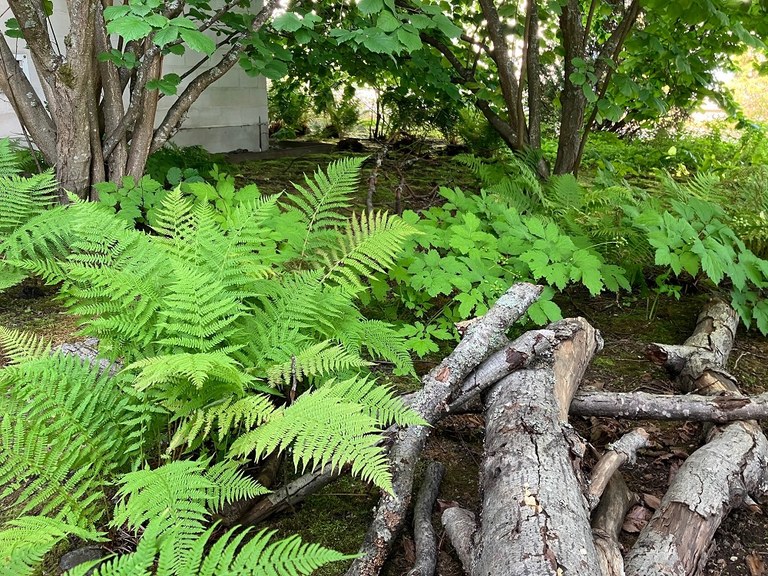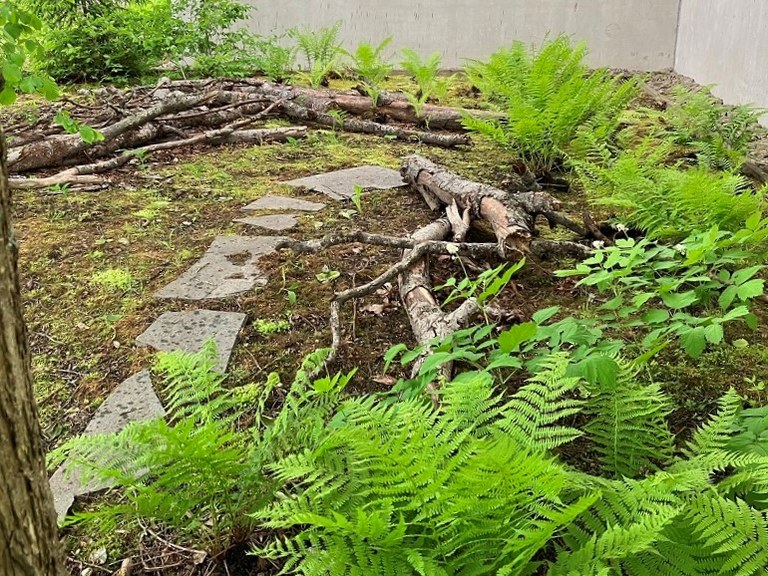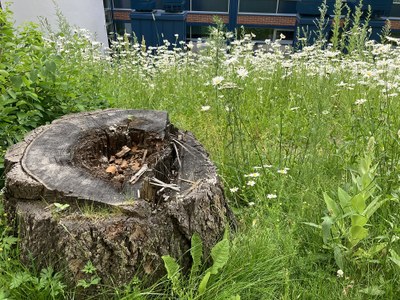Deadwood gardens on campus
On the JYU campuses, there are various sites and gardens featuring deadwood. Deadwood is vital for many species of greenspaces, and deadwood gardens are a particularly easy way to increase biodiversity in urban nature. Deadwood in its different forms provides places for the reproduction of pollinators such as bees and beetles as well as shelter and food for their offspring.
Decaying wood attracts plenty of other insects, fungi and moss species to a garden. A deadwood hedge or other types of deadwood can offer food and nesting places for birds as well. On Seminaarinmäki, in particular, there are plenty of old hardwoods, for example oaks, elms, lindens and maples, which – owing to the hardness of their wood material – are especially important to insects. One property of hardwood is that although the inner parts of the trunk may decay, the tree can continue to live for hundreds of years. This makes a hardwood simultaneously a living and decaying tree, whose trunk can serve as a habitat for a wide variety of species. The Finnish Association for Nature Conservation has published an excellent guidebook for establishing a deadwood garden; you can find it here (available only in Finnish): SLL Lahopuutarhaopas
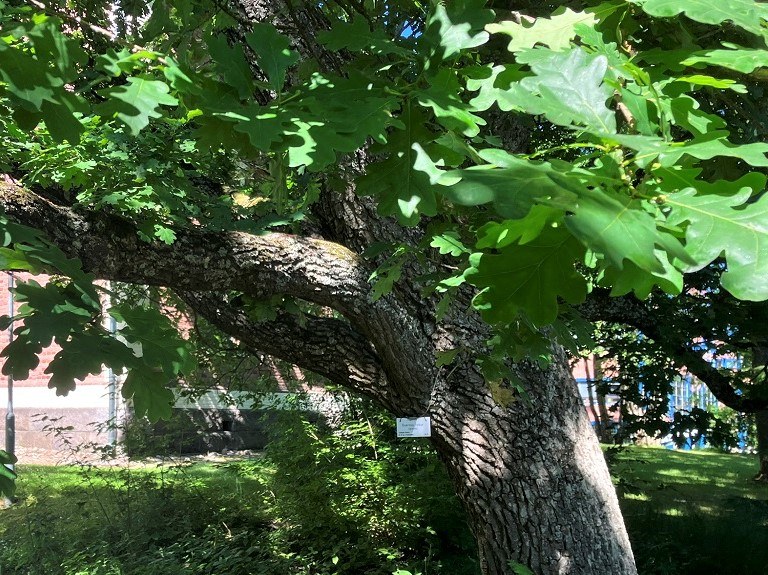
A deadwood garden requires no maintenance, and it can be set up in many ways These include making a deadwood hedge, where any twigs and branches lying on the ground can be easily stacked; leaving a decaying tree trunk standing where it can eventually fall down without any danger; leaving a taller stump to decay in place after the tree is cut down; lying a cut tree trunk along the ground; using trunks and branches for borders in a garden; or leaving a tangle of deadwood on site, where you can freely pile up various woody debris. Deadwood also lends itself to different outdoor art installations.
A number of rare deadwood beetle species have been found on Seminaarinmäki, such as the Eucnemis zaitzevi, Cryptophagus fuscicornis, and Carphoborus cholodkovskyi. Insect hotels have been placed at a few sites on Seminaarinmäki, and their number will be increased in the coming years.
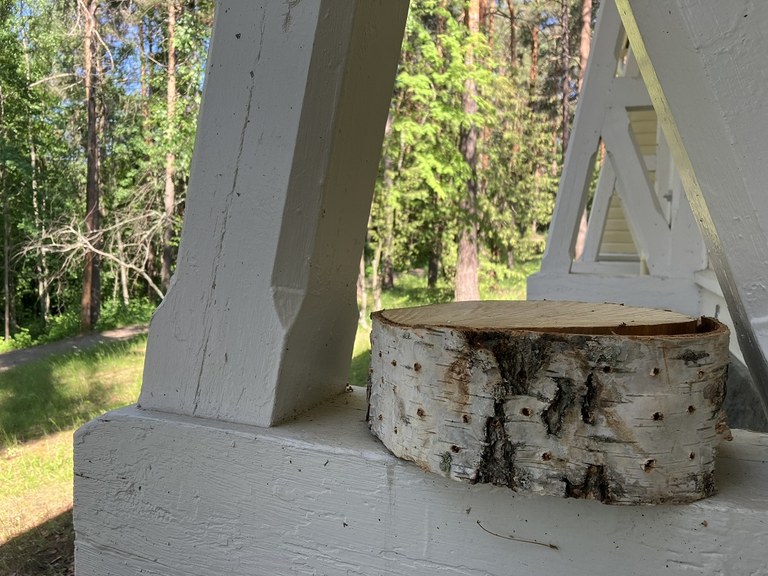
The deadwood hedge at the Library (B):
Designed by Maisemasuunnittelu Hemgård Oy 2019
The deadwood hedge was implemented on the backside of the Library in conjunction with the comprehensive refurbishment, in line with the notion of ecological compensation. Also the trunks and branches of trees cut down on this site were used for the barrier, which is planned to be lengthened further in the coming years. Good polypore growths have already appeared in the deadwood material. In connection with the deadwood hedge, a meadow was also established and there is now also a naturally dynamic shrubbery planting consisting of multiple species and featuring biodegradable protective material against ground erosion.
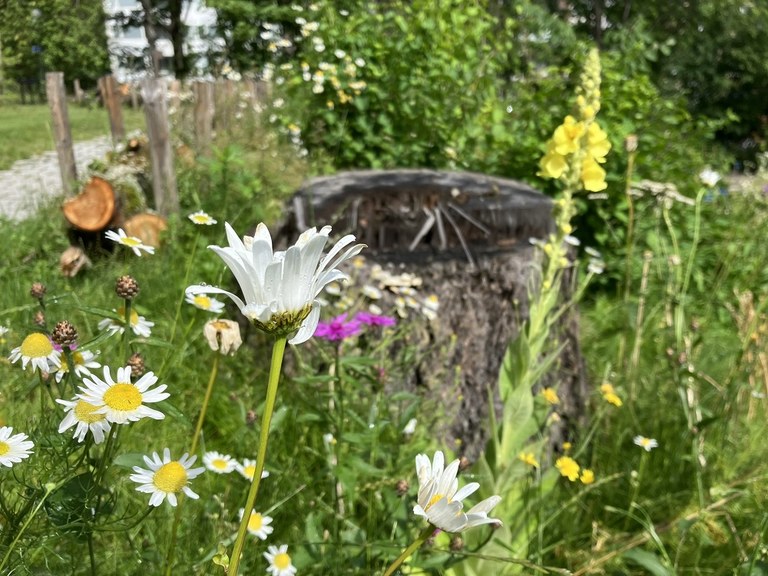
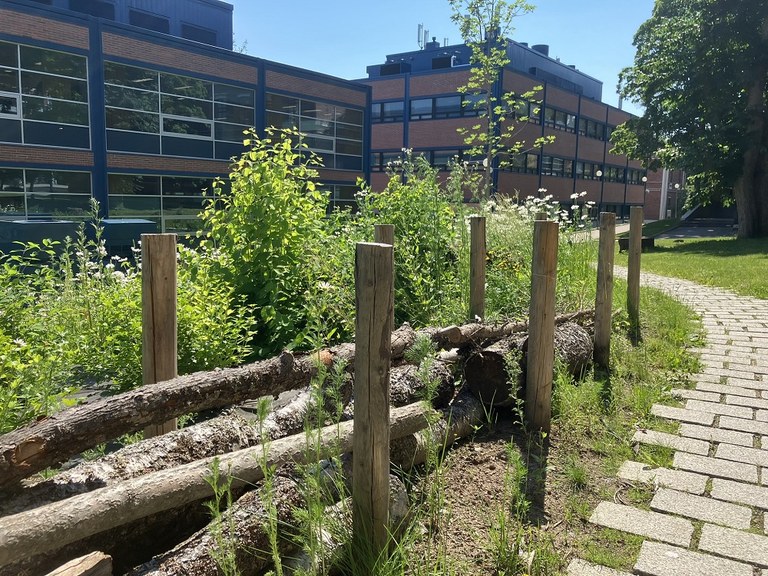
Decaying tree trunks and a deadwood pile at the Gardener’s House (J):
At the Gardener’s House, old decaying tree trunks have been left standing. In the front yard, some cut down tree trunks have been placed amid the traditional perennials growing freely below the lilac hut. The area is intentionally managed and organic material like leaves are allowed to decay on site, which maintains the natural cycle of nutrients in the soil.
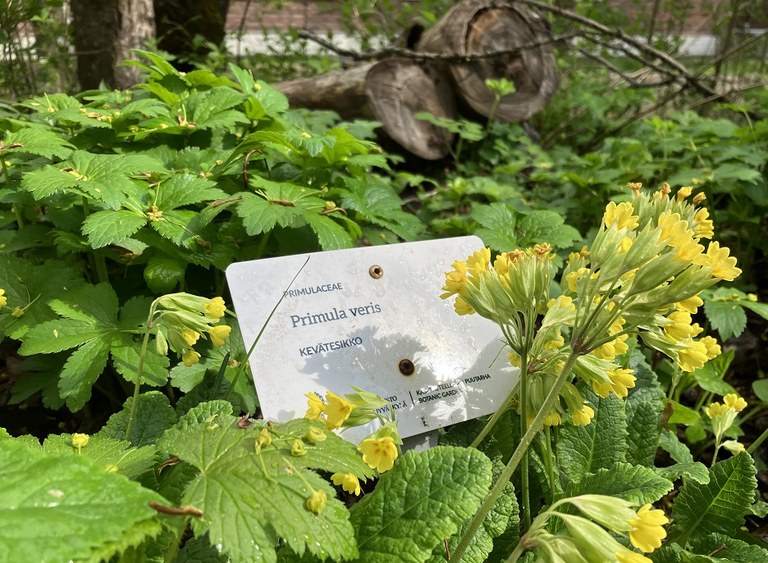
Deadwood on the lower slope of the Villa Rana garden:
There is old and decaying hardwood in the Villa Rana garden, and on the lower slope there is also deadwood left on the ground next to the fence along the Seminaarinkatu street. In fact, in the natural survey in 2009 researchers found some endangered insect species in the garden, such as Eucnemis zaitzevi, Stephostethus alternans, and Aradus truncatus. The old trees here are valuable and provide a sheltered habitat in the garden.
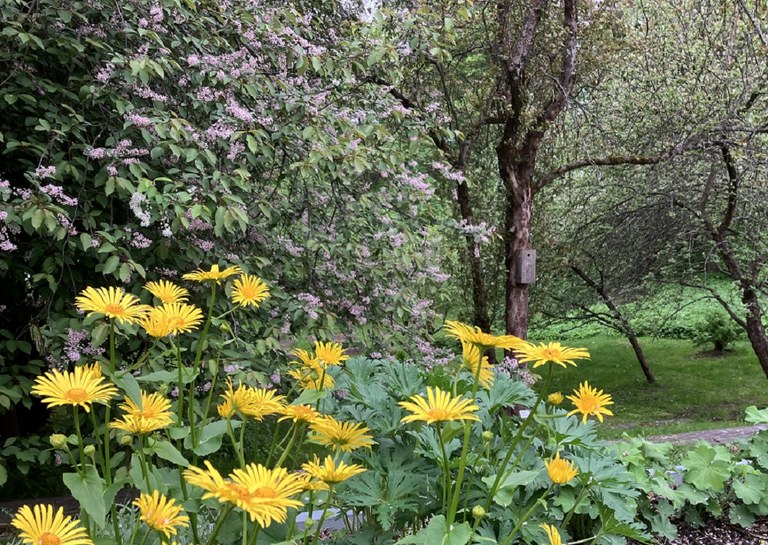
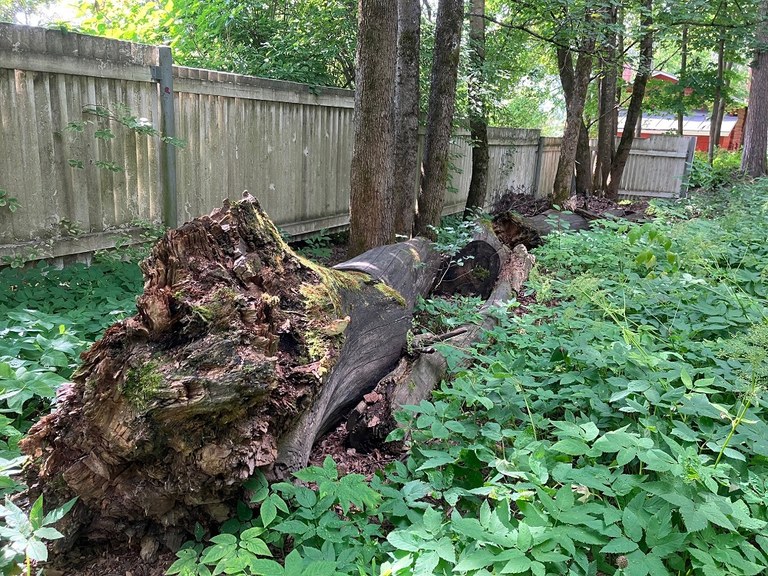
Pitkäkatu deadwood hedge:
Made from wood from trees that were cut down and pruned on the site in 2021. Located behind Liikunta (L), near the old Pitkäkatu premises and the Pitkäkatu meadow. The deadwood hedge provides a nesting place and shelter for insects living in the meadow.
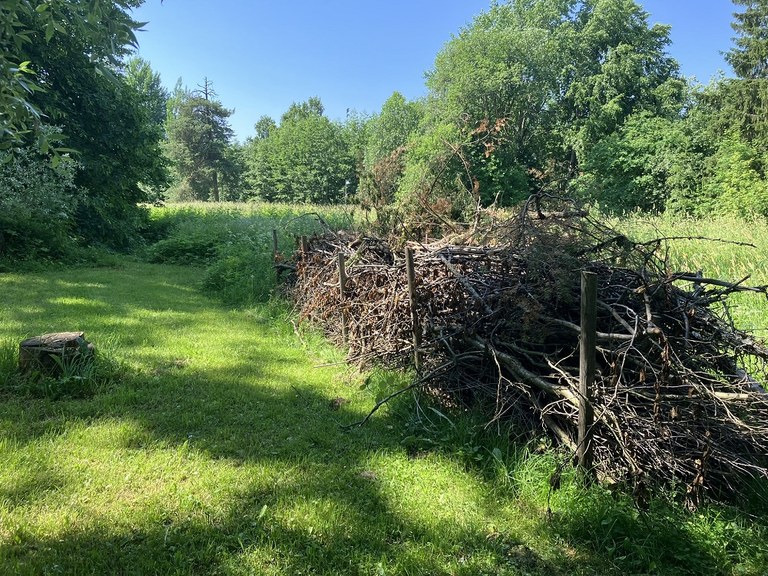
The deadwood barrier in the southwestern corner of the Mattilanniemi campus:
Made from wood from trees that were cut down and pruned on the site in 2021. Located in Mattilanniemi Park close to the Jyväsjärvi beach. The deadwood hedge provides a nesting place and shelter for insects living in the nearby meadows.
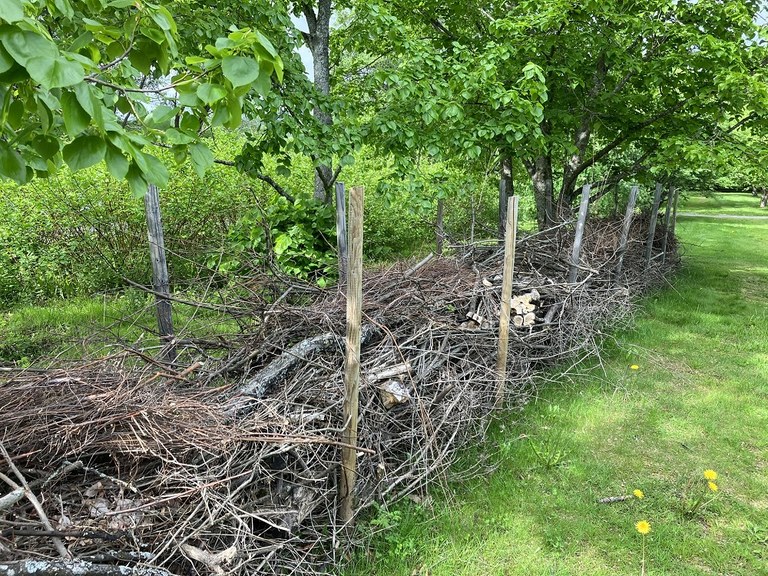
Deadwood in the ridge woods on Seminaarinmäki:
We seek to leave dead trees lying and standing in the forest areas on campus. This approach in urban areas always calls for careful consideration and related risk assessments. For example, in the pine forest on the southern hillside of Seminaarinmäki, dead pine trees have been left standing in places where they are not causing any danger to other use of the area. Efforts are made to get new trees growing there to compensate for the dead ones, but the nutrient status of the soil on the ridge has changed due to the nitrogen discharge from the city and the frequent use of this area for dog walking. The change is so extensive that the growth of new pines has started poorly.
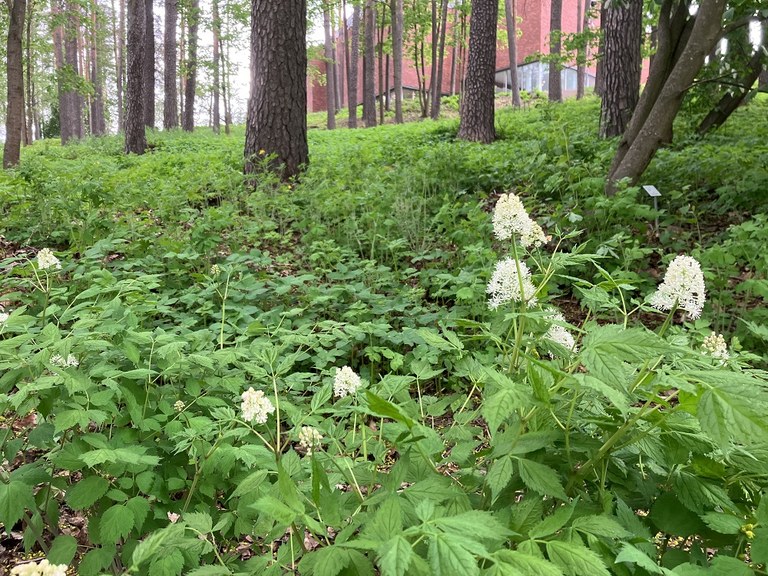
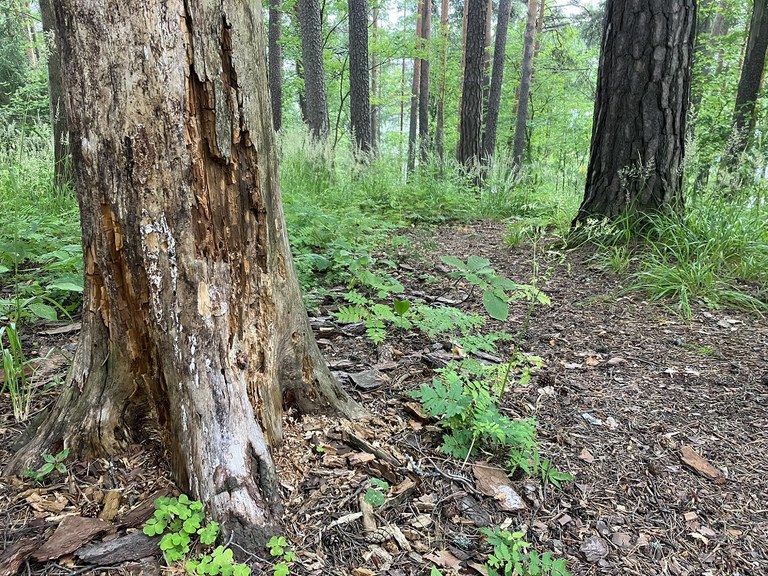
In the grove-like woods on the northern hillside, the areas are kept in a controlled natural state, and deadwood is developing there through a natural process.
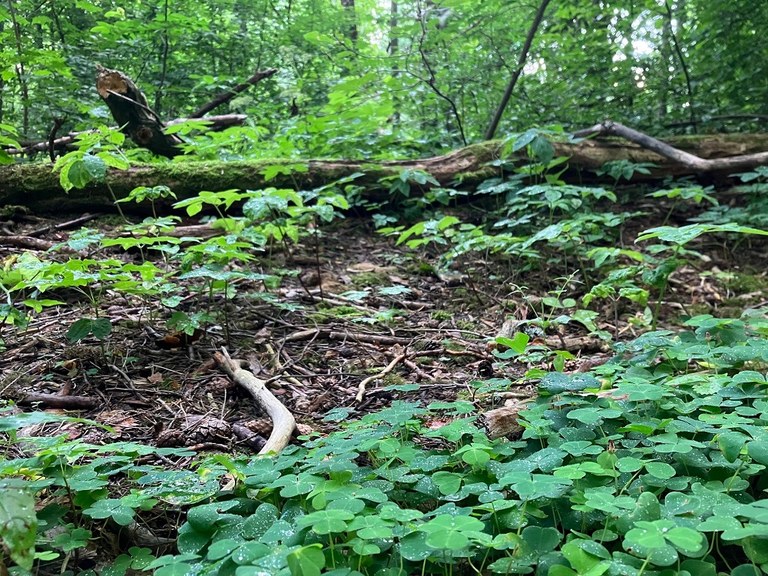
Decaying wood gardens on Ylistönrinne:
A deadwood hedge was built on Ylistönrinne in summer 2022, and deadwood can also be found among the grove plantings in the inner courtyard of the YO building (Department of Chemistry).
